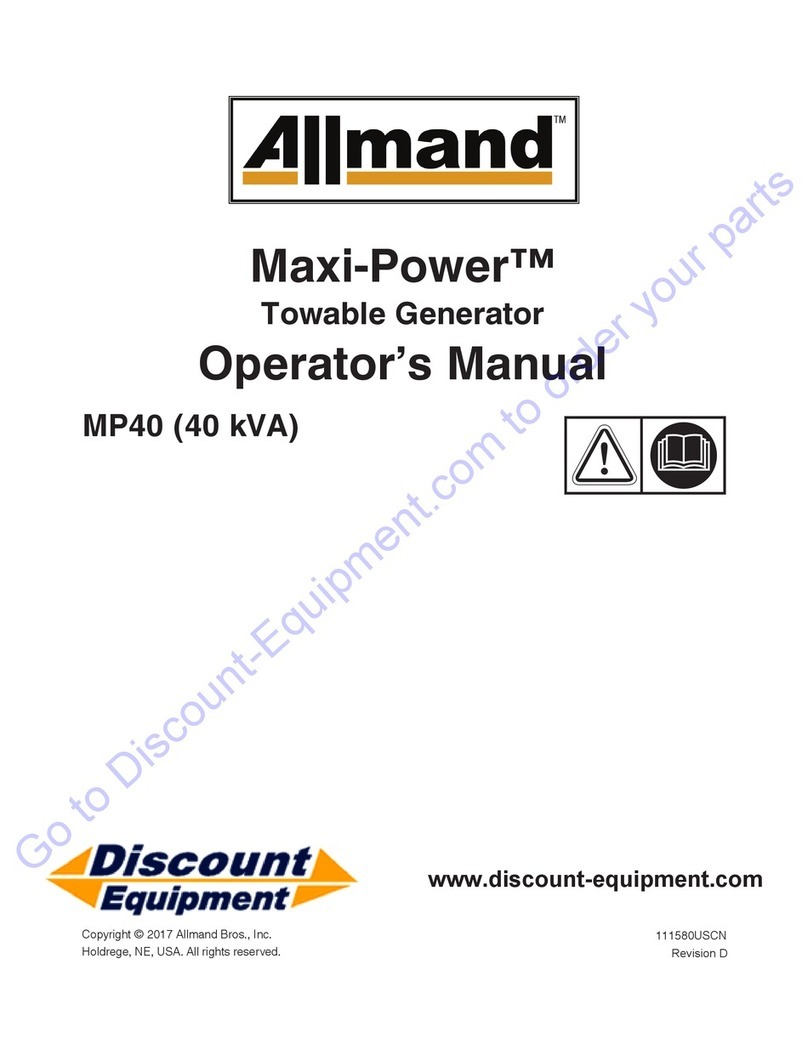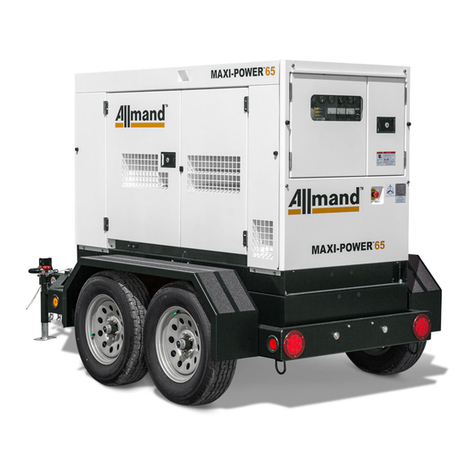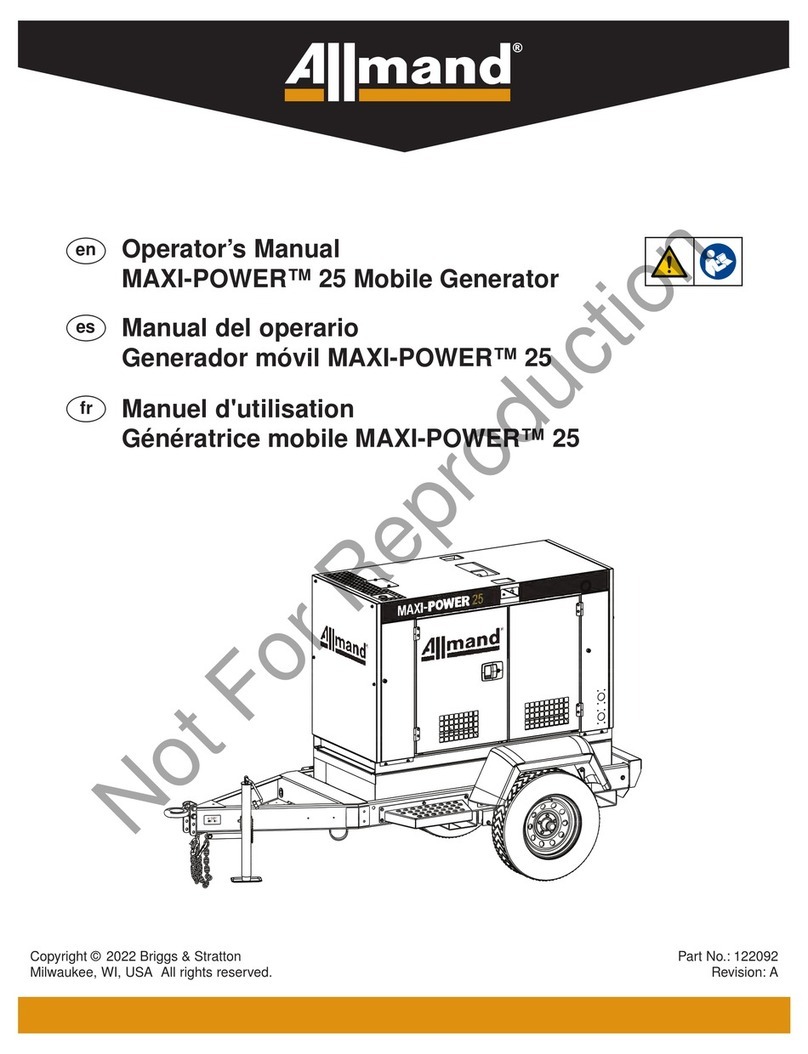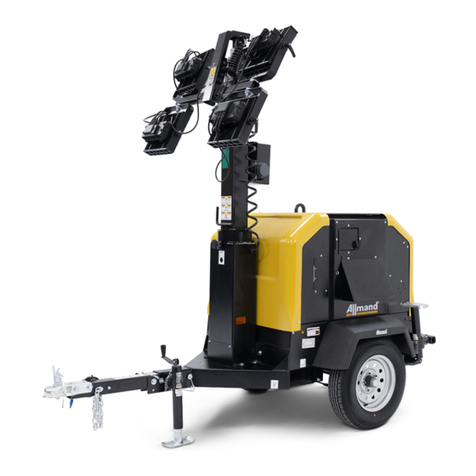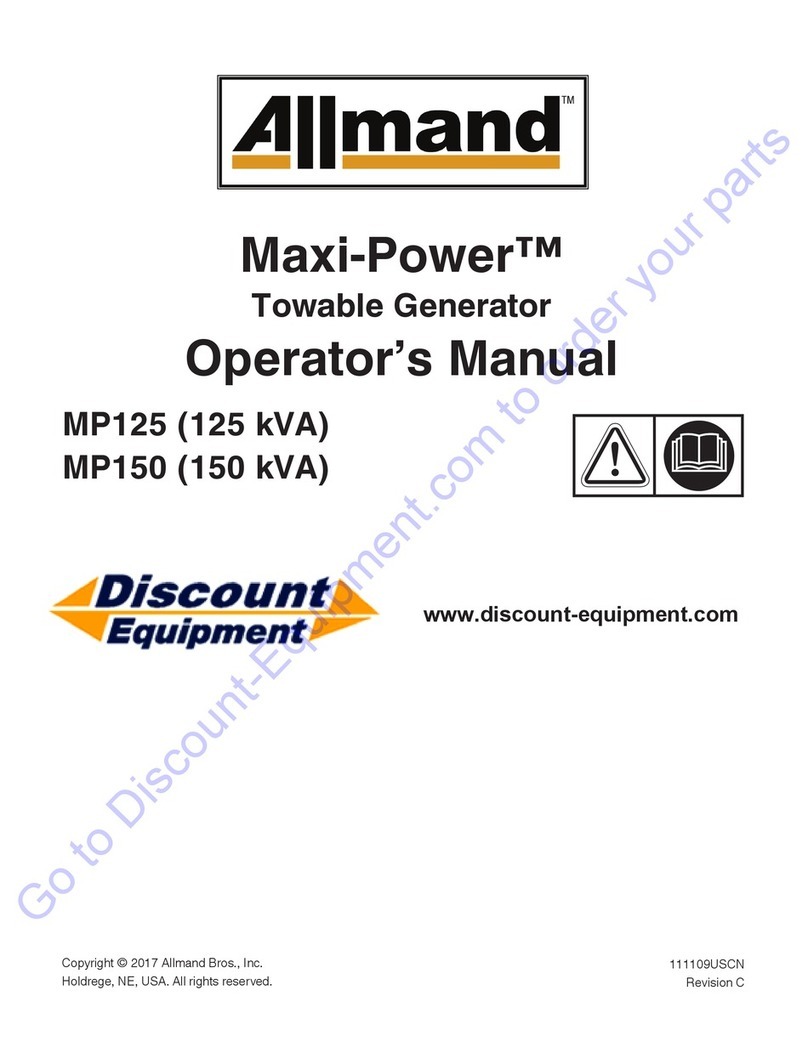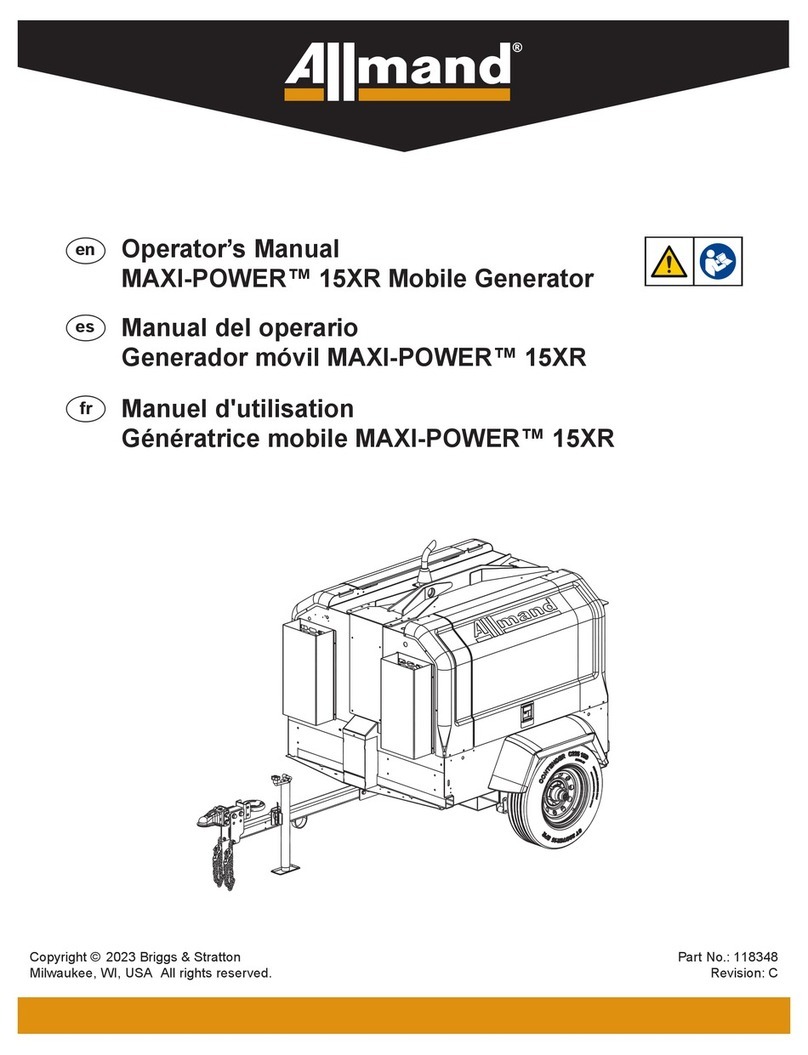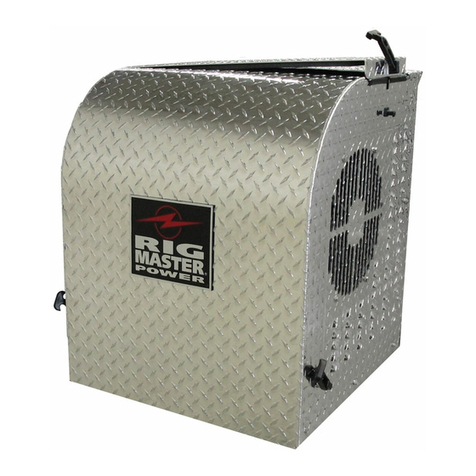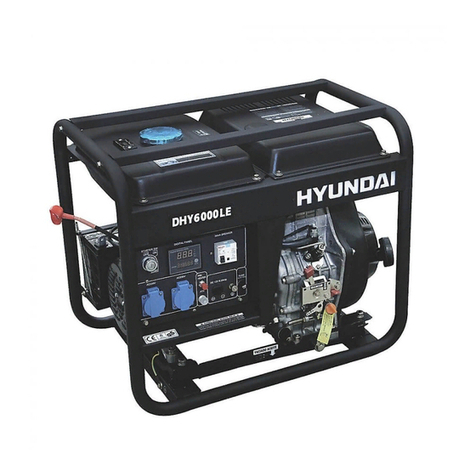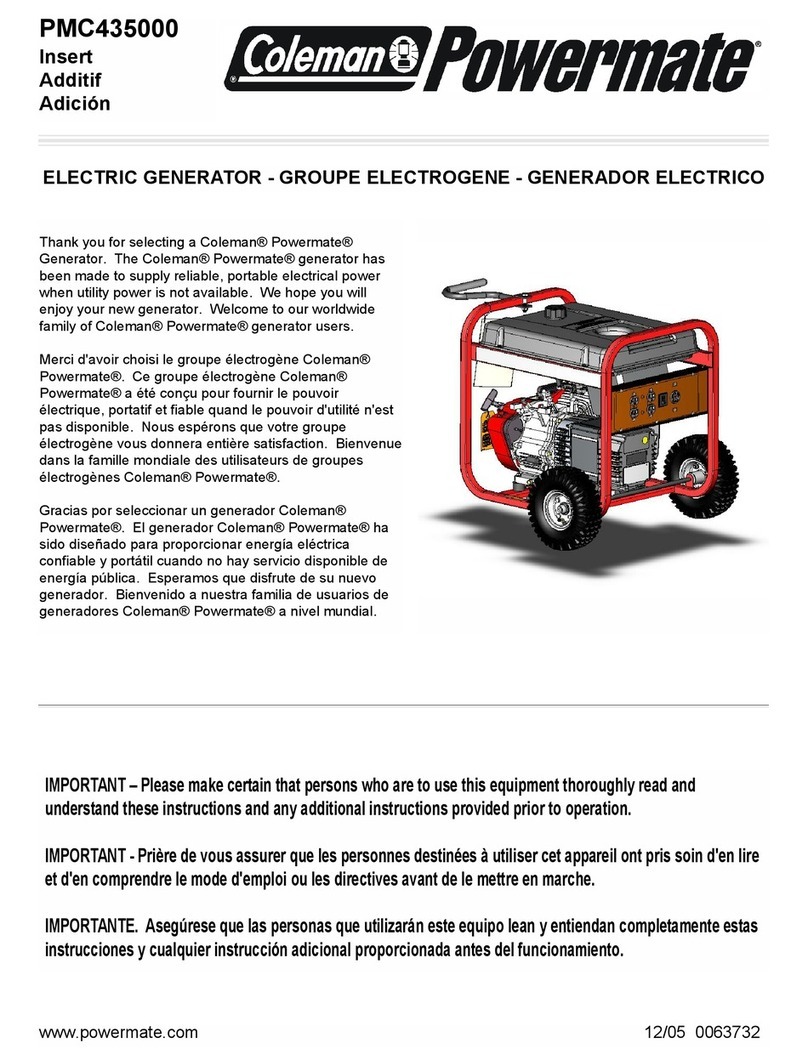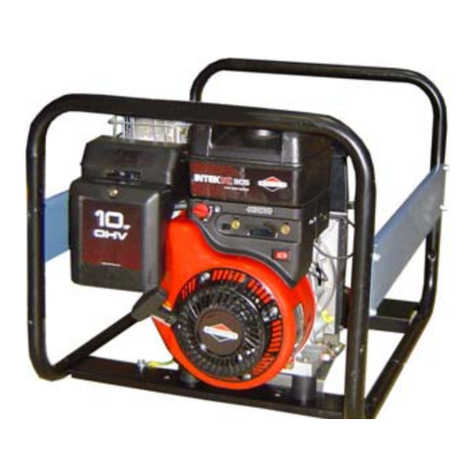Allmand Maxi-Power MP65-8B1 User manual

Copyright © 2017 Allmand Bros., Inc.
Holdrege, NE, USA. All rights reserved.
111108USCN
Revision C
Maxi-Power
Towable Generator
Operator’s Manual
MP65-8B1
(65 kVA - Isuzu)
www.discount-equipment.com
Go to Discount-Equipment.com to order your parts

Discount-Equipment.com is your online resource for quality parts & equipment.
Florida: 561-964-4949 Outside Florida TOLL FREE: 877-690-3101
Need parts?
Click on this link: http://www.discount-equipment.com/category/5443-parts/ and
choose one of the options to help get the right parts and equipment you are looking
for. Please have the machine model and serial number available in order to help us
get you the correct parts. If you don’t find the part on the website or on one of the
online manuals, please fill out the request form and one of our experienced staff
members will get back to you with a quote for the right part that your machine needs.
We sell worldwide for the brands: Genie, Terex, JLG, MultiQuip, Mikasa, Essick, Whiteman,
Mayco, Toro Stone, Diamond Products, Generac Magnum, Airman, Haulotte, Barreto,
Power Blanket, Nifty Lift, Atlas Copco, Chicago Pneumatic, Allmand, Miller Curber, Skyjack,
Lull, Skytrak, Tsurumi, Husquvarna Target, Stow, Wacker, Sakai, Mi-T-M, Sullair, Basic,
Dynapac, MBW, Weber, Bartell, Bennar Newman, Haulotte, Ditch Runner, Menegotti,
Morrison, Contec, Buddy, Crown, Edco, Wyco, Bomag, Laymor, EZ Trench, Bil-Jax, F.S.
Curtis, Gehl Pavers, Heli, Honda, ICS/PowerGrit, IHI, Partner, Imer, Clipper, MMD, Koshin,
Rice, CH&E, General Equipment ,Amida, Coleman, NAC, Gradall, Square Shooter, Kent,
Stanley, Tamco, Toku, Hatz, Kohler, Robin, Wisconsin, Northrock, Oztec, Toker TK, Rol-Air,
APT, Wylie, Ingersoll Rand / Doosan, Innovatech, Con X, Ammann, Mecalac, Makinex, Smith
Surface Prep,Small Line, Wanco, Yanmar

2 ALLMAND.COM
Thank you for purchasing this quality-built Allmand towable generator. We are pleased that you’ve placed your
confidence in the Allmand brand. When operated and maintained according to the instructions in this manual, your
Allmand generator will provide many years of dependable service.
This manual contains safety information to make you aware of the hazards and risks associated with towable
generators and how to avoid them. Because Allmand does not necessarily know all the applications this towable
generator could be used for, it is important that you read and understand these instructions thoroughly before
attempting to start or operate this equipment. Save these original instructions for future reference.
Knowing the model number of your Allmand Generator will make it easy to order maintenance or repair parts either
online or from your local dealer. The model number is generally a number stamped into metal or on a sticker
directly on your product.
Towable Generator Engine
Model Number _____________________ Model Number ______________________
Revision __________________________ Type Number _______________________
Serial Number ______________________ Code Number _______________________
Date Purchased ___________________
Go to Discount-Equipment.com to order your parts

3
Table of Contents
Operator Safety....................... 4
Features and Controls ................. 8
Transporting and Set-Up .............. 10
Operation........................... 13
Maintenance ........................ 26
Storage ............................ 34
Troubleshooting ..................... 35
Specifications ....................... 37
Wiring Diagram ...................... 38
Operation Log ....................... 41
Addendum A - Cam Locks / Arctic Kit.... 42
Addendum B - Tire Safety Information ... 43
Go to Discount-Equipment.com to order your parts

4 ALLMAND.COM
Operator Safety
Equipment Description
Read this manual carefully and become
familiar with your towable compressor.
Know its applications, its limitations, and
any hazards involved.
Every effort has been made to ensure that information
in this manual is accurate and current. Figures and
drawings in this manual may differ slightly from your
model. However, we reserve the right to change, alter,
or otherwise improve the product and this document at
any time without prior notice.
Safety and Control Symbols
The safety alert symbol indicates a potential
personal injury hazard. A safety symbol may be used
to represent the type of hazard. DANGER indicates
a hazard which, if not avoided, will result in death or
serious injury. WARNING indicates a hazard which,
if not avoided, could result in death or serious injury.
CAUTION indicates a hazard which, if not avoided,
could result in minor or moderate injury. NOTICE
indicates information considered important, but not hazard-
related.
WARNING Read and follow safety
directions:
• Be sure safety decals are present and legible.
Replace if damaged or missing.
• Do not modify machine without prior approval.
Machine safety may be compromised, functions may
be altered, or machine life may be shortened.
• Never use machine for purposes other than power
supply. Death or serious injury could result.
WARNING VENTILATION!
• Exhaust gas from the engine is poisonous, and could
cause death when inhaled.
• Avoid using the machine in an insufficiently
ventilated building or tunnel.
WARNING
• Keep flames away from battery.
• Battery may generate hydrogen gas, which is
explosive.
• Battery electrolyte is dilute sulfuric acid. Mishandling
could result in severe burns.
• When handling battery, be sure to wear appropriate
safety protection such as safety goggles and gloves.
• Dispose of battery according to local, state and/or
federal regulations.
WARNING When operating machine, do not
wear:
• Loose clothes
• Clothes with unbuttoned sleeves
• Hanging tie or scarf
• Accessories such as dangling jewelry
• Such items could be caught in rotating parts of
machine, and could result in death or serious injury.
WARNING Do not operate machine when
tired or under influence of drugs or alcohol. Careless
operation could result in death or serious injury.
WARNING Wear appropriate personal
protective equipment (PPE), such as a helmet, safety
glasses, earplugs, safety shoes, gloves, and a dust
mask.
WARNING Have first-aid boxes and fire
extinguishers near machine in case of emergency
such as injury and fires. It is also advisable to have a
list of phone numbers of doctors, ambulance and fire
department available in case of emergency.
WARNING To prevent injury, tools, cables,
hoods, covers and other unnecessary items should be
cleaned and removed from machine before operation.
Fire
Explosion
Toxic Fumes
Hot Surface
Rotating
Parts
Organic Waste
Electrocution
Hazard
Protective
Gear
Explosive
Pressure
Operator’s Manual
Battery
Clothing Prohibited
Alert
Safety
Equipment
Entanglement
Moving
Parts
Lighting
Apparatus
Remove
Key Before
Maintainance
Go to Discount-Equipment.com to order your parts

5
WARNING
• Contact with the output terminals and control board
could cause electric shock, resulting in death or
serious injury. Do not open the cover of the output
terminal board during machine operation.
• When removing or connecting a connecting cable
for changing load, be sure to switch OFF the circuit
breaker, remove the starter key from the starter
switch, then perform work.
WARNING Contact with rotating parts or
belts could cause death or serious injury. Keep hands
from rotating parts and belts while machine is in
operation.
WARNING Do not open radiator
cap during or immediately after operation. Explosive
pressure of hot liquid could cause severe burns,
resulting in death or serious injury.
WARNING Do not touch hot parts.
• Never work nearby hot portions of the machine while
it is running.
• Parts such as engine, exhaust manifold, exhaust
pipe, muffler and radiator are especially hot. Never
touch these parts, as it could result in serious burns.
• Coolant water and engine oil are also very hot and
dangerous to touch. Do not check or add while
machine is running.
WARNING Fire prevention.
• Fuel and oils are extremely flammable. Do not bring
ignition sorces near machine when checking or
adding fuel and oils.
• Adding fuel and oils should be done outdoors or in a
well-ventilated location.
• Refuel after stopping engine, and never leave
fuel near machine. Do not spill. If spilled, wipe up
completely.
• Do not fill fuel oil up to cap level. Fuel oil will overflow
due to volume expansion caused by rise of ambient
temperature. Fuel can also spill during machine
movement or transporting.
• Parts such as muffler and exhaust pipe can be
extremely hot. Remove twigs, dried leaves, dried
grass, waste paper, etc. from around muffler and
exhaust pipe.
• Keep a fire extinguisher available by machine in case
of fire.
WARNING Hang a “Now Checking and under
Maintenance” tag:
• Remove starter key from starter switch before
starting inspection, and hang up a “Now Checking
and under Maintenance” tag where it can be easily
seen. Inspector must keep key during checking and
maintenance.
• Remove black negative (–) cable from battery.
• Neglecting above procedure could result in death or
serious injury.
WARNING Adjusting belt tension:
• Attempting to adjust belt tension with machine
running could result in death or serious injury.
• Stop engine, remove starter key, and remove black
negative (-) cable from battery before adjusting belt
tension.
WARNING Hands off cooling fan:
• Contact with cooling fan while machine is running
could result in death or serious injury.
• Stop engine and remove starter key whenever
maintenance is to be performed near cooling fan.
WARNING Wear safety glasses when
cleaning dust accumulated in such devices as air-filter
by blowing compressed air.
WARNING Lighting apparatus:
• If work site is dark, use lighting to illuminate work
area. Working without illumination could result in
death or serious injury.
• Work lighting should be fitted with safety guard to
protect against breakage.
• Do not allow work light to contact fuel or oils, as they
could ignite, causing death or serious injury.
WARNING Opening coolant water drain
valve cap:
• Stop engine and let coolant water sufficiently cool
down before draining.
• If drain valve is opened before coolant water is
cooled enough, hot water could jet out, resulting in
death or serious injury.
CAUTION Refilling or draining engine oil:
• Engine oil is extremely hot during and just after
operation.
• Stop engine and wait 10 to 20 minutes before
checking, adding or draining engine oil.
CAUTION Treatment of organic wastes.
• Waste liquid from machine contains harmful
material. Do not discharge onto ground or into rivers,
lakes or sea. Such material will contaminate the
environment.
• Be sure to use an approved container to hold waste
liquid from machine.
• Be sure to follow local, state or federal regulations
when disposing of oil, fuel, coolant (antifreeze), filter,
battery or other harmful materials.
Go to Discount-Equipment.com to order your parts

6 ALLMAND.COM
WARNING
• The engine exhaust from this product contains
chemicals known to the State of California to cause
cancer, birth defects, or other reproductive harm.
WARNING
• Battery posts, terminals, and related accessories
contain lead and lead compounds, chemicals known
to the State of California to cause cancer, birth
defects, or other reproductive harm. Wash hands
after handling.
NOTICE
• Parts of this machine contain sensitive electronic
components. If welding work is required, disconnect
any electronic equipment on the machine to prevent
damage due to excessive current.
NOTICE
• When washing the machine, cover the control panel,
generator and its electric parts to prevent them from
being exposed to splashing water and avoid possible
malfunction.
• Dust, sand and dirt accumulated inside control panel
could cause instrument malfunction. Clean with
compressed air.
Safety Decals and Locations
The following safety decals are attached to the machine. Keep them clean at all times. If they are damaged or
missing, contact your authorized dealer for replacements. Part numbers are indicated on the lower right corner of the
label. Adhere a new one to the original location.
A
B
FE
C
G
H
D
I
K
J
Go to Discount-Equipment.com to order your parts

7
I
A
H
B
E
G
C
F
D
KJ
Go to Discount-Equipment.com to order your parts

8 ALLMAND.COM
Features and Controls
Read this Operator’s Manual and safety rules before operating your towable generator.
Compare the illustrations with your towable generator, to familiarize yourself with the locations of various
controls and adjustments. Save this manual for future reference.
A - Control Panel - Controls and monitors various
machine functions
B - Voltage Selector Switch - Selects output voltage
C - Output Terminals - Equipped with three phase
and single-phase terminal and receptacle for single
phase
D - Air Filter - Filters impurities from intake air
E - Reserve Coolant Tank - Reserve coolant storage
F - Engine Oil Filler Port - Location for adding engine
oil
G - Engine - Drives generator
H - Engine Oil Filter - Filters impurities from engine oil
I - Radiator - Cools engine
J - Generator Main Unit - Generates AC power
K - Battery - Power for starting engine (accessed from
opposite side)
L - Fuel Air-Bleeding Electromagnetic Pump -
Automatically bleeds air from fuel pipes
M - Fuel Pre-Filter - Filters impurities / separates
water from fuel
N - Fuel Filter - Filters impurities from fuel
O - Fuel Pipe Selector Valve - Selects fuel source
P - Intercooler - Cools air heated by engine
Q - Fuel Tank - Stores fuel
R - Exhaust Muffler - Muffles engine exhaust
A B
C D E F G H I
J K L M N O P Q R
Internal Components
Go to Discount-Equipment.com to order your parts

9
A - Monitor Lamp
B - Tachometer with Hourmeter
C - Fuel Gauge
D - Frequency Meter
E - Voltmeter
F - Panel Light
G - Ammeter
H - Panel Light Switch
I - Starter Switch
J - Manual-Automatic Change-Over Switch
K - Frequency Adjuster Switch
L - Engine Speed Switch
M - Engine Oil Pressure Gauge
N - Coolant Temperature Gauge
O - Ammeter for Battery Charge
P - Voltage Adjuster Switch
Q - Ammeter Change-Over Switch
R - Main Circuit Breaker
A B
C D E F G H
I
J K L M N O P Q R
Instrument Panel
Go to Discount-Equipment.com to order your parts

10 ALLMAND.COM
Transporting and Set-Up
Read entire Operator’s Manual before you
attempt to setup, transport, or operate your
new towable generator.
Your towable generator is ready for use after it has
been properly setup with the recommended oil and fuel.
If you have any problems with the setup of your towable
generator, contact your authorized dealer
Transporting
WARNING When loading and unloading the
unit, be sure to use the lifting bail (B) located at the top
center of the unit.
• Never get under the unit when lifted.
• Never lift the unit while in operation.
• If the unit is transferred by truck, fasten it by ropes
at the front eye and rear stand. Also be sure ot
place a set of chocks against the front and rear of
each wheel.
Lifting the Generator
Before lifting the unit, make sure to check the lifting
bail for any cracks, loose bolts, etc.
1. Connect the hook (A) of the crane or shackle with
the lifting bail (B) eye fitted at the top center of the
unit. Ensure there is no person standing around
the unit. Then perform hoisting operation.
2. Select a truck or crane with capacity sufficient
for the weight and size of the unit. See
Specifications.
3. Never hang anything from generator while lifting.
Bail is designed to carry only weight of generator.
B
A
Towing the Generator
WARNING Before towing the machine, make
sure to check and confirm the following points. Failure
to follow the instructions below, could result in serious
injury or death.
• Proper tire air pressure.
• Tire lug nuts are not loose.
• Tires are not worn or damaged. See Addendum
B - Tire Safety Information.
• Ensure that the end of the drawbar is securely
connected to the coupler of the towing vehicle.
• Ensure there is no damage to the towing vehicle
and the drawbar of the machine.
• Be sure to keep hands and fingers away from
any part of the coupling device when coupling or
uncoupling a drawing device to a draw bar.
• Be sure the height of the hitch is adjusted so
that the trailer is level while connected to the tow
vehicle.
• Make sure to drive the towing vehicle safely.
Set-Up
WARNING
• Exhaust gas from the engine is poisonous, and could
cause death when inhaled.
• Avoid using the machine in an insufficiently ventilated
building or tunnel.
• Do not position the exhaust gas outlet in the direction
of a person or building.
The machine should be operated in the following
conditons:
• Ambient temperature 5°F to 104°F (-5°C to 40°C).
• Humidity less than 85%.
• At altitudes lower than 3,281 ft (1000 meters)
above sea level.
• Set up the machine in a place with good
ventilation, lower temperature, and with
surroundings as dry as possible.
• If more than two machines are placed parallel in
operation, keep enough distance so that exhaust
air from one machine does not affect the other.
• Set up the unit in an area where fresh air is
always available.
• Keep enough space around the unit for inspection
and maintenance access.
WARNING The machine must be parked
horizontally on a level surface. If the machine must be
parked on a slope, place it across the grade to prevent
rolling. Do not park on a slope exceeding 15°. Be sure
to place wheel chocks (C) against the front and back
of each wheel.
C
Go to Discount-Equipment.com to order your parts

11
Grounding
WARNING
• Failure to properly ground the unit could result in
death or serious injury. Be sure to properly ground
the unit before operation.
1. Using a mallet, install a grounding rod (D) firmly
into the ground, less than 5 feet (1.5 m) from the
unit’s grounding terminal (E).
2. Connect the grounding rod cable to the grounding
terminal.
E
D
Selecting Cable
• Select a cable (F) with sufficient diameter by
considering the permissible current on the cable
and the distance from the generator to the load (G).
• If the current flowing to the load exceeds the
permissible current of the cable, resultant
overheating may burn the cable. Similarly, if the
cable is too small in thickness to the length, the
input voltage to the load will fall to cause the load
input power to drop, as a result, the performance of
the machine cannot be displayed.
F
G
• Below is a simplified three-phase three-wire formula
to seek voltage drop or cross-sectional area of
the cable from cable length and working current.
Select such a cable length and thickness so that the
voltage drop will remain less than 5%.
Output
system
Voltage
drop
Cross-
Sectional
Area of
Cable
e: Voltage drop
(V)
e¹: Voltage
drop between
outside line
or one line of
each phase
and neutral line
A: Cable
thickness
(mm²)
L: Cable length
(m)
I: Working
current (A)
Three-
phase
3-wire Type
e = 30.8
x L x I /
1000 x A
A = 30.8
x L x I /
1000 x e
Three-
phase
4-wire Type
e = 17.8
x L x I /
1000 x A
A = 30.8
x L x I /
1000 x e¹
• The following tables show the relations between
the cable length and the cable thickness (nominal
cross-sectional area) suited to the working current.
(Based on the condition that working voltage is 200
V, with voltage drop of 10V.)
Single-Conductor Cable (Unit: in² (mm²))
Length
(ft (m)) /
Current
164
(50)
246
(75)
328
(100)
410
(125)
492
(150)
656
(200)
50A 0.01
(8)
0.02
(14)
0.03
(22)
0.03
(22)
0.05
(30)
0.06
(38)
100A 0.02
(22)
0.05
(30)
0.06
(38)
0.08
(50)
0.08
(50)
0.09
(60)
150A 0.06
(38)
0.06
(38)
0.08
(50)
0.09
(60)
0.12
(80)
0.16
(100)
Go to Discount-Equipment.com to order your parts

12 ALLMAND.COM
Three-Conductor Cable (Unit: in² (mm²))
Length
(ft (m)) /
Current
164
(50)
246
(75)
328
(100)
410
(125)
492
(150)
656
(200)
50A 0.02
(14)
0.02
(14)
0.03
(22)
0.03
(22)
0.05
(30)
0.06
(38)
100A 0.06
(38)
0.06
(38)
0.06
(38)
0.08
(50)
0.08
(50)
0.09
(60)
150A 0.03x2
(22x2)
0.03x2
(22x2)
0.06x2
(38x2)
0.06x2
(38x2)
0.06x2
(38x2)
0.08x2
(50x2)
Fuel Pipe Selector Valve
WARNING
• Monitor the fuel feeding conditions while feeding fuel
from a separate fuel storage tank.
• Do not switch the selector valve to the external tank
position unless an external tank is being used. Fuel
pipe damage and fuel leakage may result.
• Do not use excessive force operating the selector
valve handle. Valve damage and fuel leakage may
result.
This valve is designed to feed fuel to the engine from
an external fuel storage tank.
Operation
1.Unit is delivered from factory with fuel line piping and
selector valves set as shown (A). When operating the
unit using installed fuel tank, run the machine with the
fuel line piping and selector valves with the factory-
arranged settings.
2.When using a separate storage tank (B), remove the
plugs (C) fitted at the connections to the separator
tank and make piping connections as shown in D.
Then switch the selector valve handle as shown (E).
3.When removing the external tank, be sure to return
the selector valve handle to the original position (A),
remove the external tank piping connections, and
reinstall the plugs.
Installation of Separate Storage Fuel Tank and
Piping
1.Use oil resistant fuel hose with inside diameter of
8mm to 10mm.
2.Install the fuel tank so that the fuel level of the tank
may be kept at a level 0 - 98” (0 - 2.5m) higher than
the machine.
3.In order to avoid suction of water and sediment,
install the suction and return pipe so that the inlet
ports are 0.6 - 0.8” (15 - 20mm) higher than the
bottom of the tank (B).
4.When refilling fuel in the tank, be careful to not mix
water and sediment.
0.6 - 0.8”
(15 - 20mm)
Grounding
Min. 0” (0m)
Max. 98” (2.5m)
A
E
B
C
D
Go to Discount-Equipment.com to order your parts

13
Operation
If you have any problems operating your towable
generator, please contact your authorized dealer.
WARNING POISONOUS GAS
HAZARD. Engine exhaust contains carbon monoxide,
a poisonous gas that could kill you in minutes. You
CANNOT smell it, see it, or taste it. Even if you do not
smell exhaust fumes, you could still be exposed to
carbon monoxide gas.
• Operate this product ONLY outside far away from
windows, doors and vents to reduce the risk of
carbon monoxide gas from accumulating and
potentially being drawn towards occupied spaces.
• Install battery-operated carbon monoxide alarms or
plug-in carbon monoxide alarms with battery back-up
according to the manufacturer’s instructions. Smoke
alarms cannot detect carbon monoxide gas.
• DO NOT run this product inside buildings, garages,
tunnels, or other partially-enclosed spaces, even
if using fans for ventilation. Carbon monoxide can
quickly build up in these spaces and can linger for
hours, even after this product has shut off.
• ALWAYS place this product downwind and point the
engine exhaust away from occupied spaces.
If you start to feel sick, dizzy, or weak while using this
product, get to fresh air RIGHT AWAY. See a doctor.
You may have carbon monoxide poisoning.
Oil Recommendations
Engine Oil
We recommend the use of CJ-4 class engine oil or
superior class for best performance. Using poor quality
engine oil may shorten the life of the engine.
Outdoor temperatures determine the proper oil viscosity
for the engine.
Use the chart to select the best viscosity for the outdoor
temperature range expected.
NOTICE When two or more different brands of oil are
mixed, its performance can be deteriorated. When it
is expected to be used for a long period at light load
(less than 20% load), it’s better to replace the oil with
suitable oil.
˚F
(˚C)
-13
(-25)
-4
(-20)
5
(15)
32
(0)
59
(15)
77
(25)
86
(30)
104
(40)
point away
from home
USE OUTDOORS - AVOID CARBON MONOXIDE POISONING
CARBON MONOXIDE ALARM(S)
Install carbon monoxide alarms inside your
home.Without working carbon monoxide
alarms, you will not realize you are getting
sick and dying from carbon monoxide
poisoning.
Go to Discount-Equipment.com to order your parts

14 ALLMAND.COM
Checking / Adding Engine Oil
WARNING Be sure to check the unit
before operation. If any issue is found, be sure to
repair it before restarting the unit. Be sure to make
daily checks before operation. Operating the unit
without prior inspection could result in death or serious
injury.
NOTICE Unit should be on level before checking oil
level. When you check oil level after initial operation,
wait 10 to 20 minutes after stopping engine before
checking the oil level.
1. Place unit on a flat, level surface.
2. Clean area around oil fill, remove oil level gauge,
and wipe it with a clean cloth.
3. Re-insert the oil level gauge fully and pull it out
again. The oil level should be between LOW and
HIGH (A).
4. If the oil level is below LOW, add engine oil to oil
filler port.
A
• While checking oil level, check also for
contamination. If the oil is found dirty, contaminated
or should it be changed according to the periodic
inspection list, change the oil. See Maintenance.
• Excessive engine oil supply could cause engine
output degradation. Therefore, never fill more
than the HIGH level.
Checking Coolant Level
WARNING Taking off the radiator
cap.
• Be sure to stop the machine and allow time to
cool. Then loosen the radiator cap one notch. After
the coolant water is sufficiently cooled and the
inner pressure is released, take the cap off. If this
procedure is neglected, the inner pressure can blow
off the cap. Steam jetting out of the radiator could
result in serious burns.
NOTICE Continuing operation at low coolant levels
could result in damage to the radiator.
1. Check the coolant level in the reserve tank. If it is
lower than the limit, open the cap and replenish
the coolant. Level must be kept above MIN mark
(B).
2. If there is a little or no coolant in the reserve tank,
remove the radiator cap and check the coolant
level. Supply coolant to the radiator and also the
reserve tank, if necessary. See Maintenance.
B
HIGH
LOW
Checking / Adding Fuel
Fuel must meet these requirements:
• Do not use such diesel fuel having higher sulfur
content above 0.0015%(15 ppm).
• Use ultra-low sulfur diesel fuel only for diesel engine.
• Use such diesel fuel which conforms to either
standard EN590 or ASTM D975.
• Do not use kerosene. And never use fuel mixed with
kerosene.
• Carbon residue content in fuel must be a low.
• Follow the designated regulations to dispose of fuel.
NOTICE Fuel for DIESEL engines must have the
following specific characteristics:
• It must be free from even minute dust particles in it.
(Do not use such diesel fuel which has been long
stored in a oil drum.)
• It must have optimum viscosity.
• It must have high cetane number.
• It must have high fluidity even at low temperature.
• Carbon residue content in fuel must be a low.
• It must not contain zinc and NA (sodium).
NOTICE Before starting operation, make sure to
check the level of residual fuel so that fuel shortage
during operation can be avoided. Drain condensate
accumulated at the bottom of the fuel tank whenever
necessary.
WARNING Fire Prevention.
• Do not allow ignition sources near fuel.
• Fuel is extremely flammable and dangerous. Handle
with extreme care.
• Refuel only after stopping engine, and never leave
open fuel can near machine. Do not spill. it fuel is
spilled, wipe up completely.
• Refilling fuel tank should be done outdoors or in a
well-ventilated location.
Go to Discount-Equipment.com to order your parts

15
• Do not fill fuel oil up to the cap level. When fuel
tank is filled to cap level, fuel oil will overflow due
to volume expansion caused by rise of ambient
temperature. Fuel may also spill due to machine
movement or transporting.
Checks Before Starting
Check Fuel Filter / Pre-Filter for Condensate
If the red float (D) below the interior element (C) of the fuel
filter rises up to water drain level, it is necessary to drain
water.
1. Open drain valve (E) to drain accumulated condensed
water into an approved container.
2. After draining the condensate, close the drain valve.
3. Dispose of condensate according to local, state and/or
federal regulations.
C
D
E
Check Belt Tension
NOTICE If belt tension too tight, it can cause shaft
breakage or shorten the life of a bearing. If too loose, the
belt may slip and will cause early breakage or damage to
the belt.
1. Visually check the belt for any cracks, wear, and other
defect. Replace if needed.
2. Depress the middle of the belt with a finger. Belt
deflection should be between 0.24 - 0.31” (6 - 8mm)
(F).
If adjustment is needed:
1. Loosen the alternator mounting bolt. Adjust until belt
deflection is 0.24 - 0.31” (6 - 8mm) when pressing with
a finger. Tighten securely.
2. Wipe any grease, oil, coolant, etc. from belt.
F
Check Oil Fence for Condensate
1. Remove the drain plug (G) and drain any condensate
accumulated inside the oil fence into an approved
container.
2. After making sure all condensate is drained, reinstall
the drain plug.
3. Dispose of condensate according to local, state and/or
federal regulations.
G
Clean Control Panel
Open control panel and check each breaker, terminal
plate and controller for any dust, sand and dirt
accumulated. Clean with compressed air.
Unit Operation
WARNING
• Keep the door shut and locked when machine is in
operation.
• If opening the door is necessary, be careful not to
touch rotating or hot parts. Burns or serious injury
could result.
NOTICE Be sure to let unit warm up after starting for
smooth operation of the engine and the generator. Do
not operate the engine at full load immediately after
starting. This will shorten the equipment life.
• During machine warm-up, inspect the equipment
for any loose parts, fluid leakage, and other
issues.
• Make sure that monitor lamps are off.
Go to Discount-Equipment.com to order your parts

16 ALLMAND.COM
• Be sure to operate the generator at a rated
frequency, irrespective of the load capacity.
• Operating the unit at a frequency lower than the
rated frequency could result in generator damage.
• Avoid operating the unit for long periods without
loads or with light loads.
To Start Unit
Manual Operation
1. Check and confirm that both the main circuit
breaker (A) on the operation panel and the circuit
breakers for the auxiliary receptacles at the output
terminal panel are in the OFF position.
2. Set the selector switch (B) to MANUAL operation.
3. Turn the starter switch (C) to the RUN position.
The engine starts preheating automatically.
4. When the preheating lamp (D) turns off, turn the
starter switch (C) to the START position to start
the engine.
5. Once engine has started, let it warm up about 5
minutes at no-load condition.
6. After warm-up, set the engine speed switch (E)
to the HIGH position, then adjust the frequency
adjuster (F) UP or DOWN until the frequency
meter (G) reads 60 Hz.
7. Adjust to the rated voltage by turning the voltage
adjuster knob (H) while monitoring the voltmeter
(I).
8. Supply power to the load(s) by switching both the
main circuit breaker (A) and the circuit breaker(s)
for the auxiliary receptacle(s) to the ON position.
CB
D
HA
G I
F E
Go to Discount-Equipment.com to order your parts

17
Automatic Operation
WARNING
• Never put hands close to the interior of the
machine, as the generator can start unexpectedly.
• Before starting inspection and maintenance, make
sure to place the selector switch to MANUAL
operation, and hang a tag stating “Under
inspection and maintenance”.
• Remove the black negative (-) cable from the
battery.
• Remove the starter key from the unit.
• Failure to heed the above-noted items could result
in deat or serious injury.
Connection of Remote Control Switch
• The remote control terminal (J) is provided inside
the output terminal. Perform cable connection
as shown below for remote control operation
of the machine. Be sure to remove the black
negative (-) cable from the battery before making
connections.
NOTE: When the unit is in AUTOMATIC mode,
battery discharge occurs. Be sure to charge
battery.
J
Go to Discount-Equipment.com to order your parts

18 ALLMAND.COM
Operating Procedure
1. Start the generator unit and adjust the frequency
and voltage as outlined in Manual Operation.
2. Turn the starter switch to the STOP position to
stop the engine.
3. Turn the main circuit breaker, as well as the
circuit breaker of any receptacle connected to a
load, to the ON position.
4. Turn the operating selector switch on the control
panel to the AUTO position, and turn the engine
speed switch to the HIGH position.
5. The unit is now in stand-by mode, and will start
once the start signal is sensed. See Function.
Function
• When the start signal activates in stand-by mode,
it starts the unit. (This includes preheating.)
• When the stop signal activates, the unit continues
to operate for a cool-down phase, then the unit
stops and is placed again in stand-by mode.
Starting Action
• The unit will attempt to start over three 10-second
intervals, with an 8-second break (including
preheating) between attempts. If after the third
attempt the unit will not start, an indicator light
will light, indicating the problem. See Meters and
Indicator Lights during Operation; see also
Troubleshooting.
• If the OVERCRANK indicator light turns on,
immediately press the emergency stop button.
See Emergency Stop.
NOTICE Failure to press the emergency stop
button when the OVERCRANK indicator light
turns on may result in engine damage.
Go to Discount-Equipment.com to order your parts

19
Meters and Indicator Lights during Operation
During normal operation, each indication of
instruments is shown in the table below. Refer to the
table for daily checks.
NOTE: The values marked * vary with location of the
voltage selector switch.
• Be sure to frequently check meters and indicators
for proper operation, or any machine water, oil,
fuel leaks, etc.
• The above table gives standard values. They may
vary slightly depending on operating conditions
and other factors.
• In single-phase load operation, check the current
of L1, L2, and L3 phase with the ammeter, by
turning the ammeter change-over switch.
Each current should be balanced if unbalanced.
Change load connections so the current of L1,
L2, and L3 is equally balanced. Make sure that
the current of each phase does not exceed the
rated one.
• When the voltage selector switch is in the single-
phase 240/120V position, place the ammeter
change-over switch to the L1 or L3 position to
read the output.
Panel Light
• The instruments are provided with illumination.
Switch the panel light to ON.
• When illumination is not necessary, turn the light
OFF to conserve lamp life.
Stopping the Unit
1. Switch the circuit breakers for the auxiliary
receptacles, as well as the main circuit breaker
on the operation panel, to the OFF position.
2. Allow the unit to cool down, 30-60 seconds for
normal to light load conditions, 2-5 minutes for
heavy load conditions, then turn the starter switch
to the STOP position to stop the engine.
NOTICE Failure to allow unit to cool down could
result in engine damage.
3. While the machine is unused, keep the operation
selector switch in the OFF position.
Emergency Stop
NOTICE
• The Emergency Stop button should be used only
for emergencies.
• Regularly check the operating performance.
1. If it is necessary to stop the generator in the event
of an emergency, press the Emergency Stop
button.
Voltmeter
(V)
Frequency
Meter (Hz)
Ammeter
(A)
Monitor Lamp
Oil
Press
Air
Filter
Boost
Temp
Engine
Temp
Over
Crank
Containment
Level
Glow Diagnostic
Lamp
Before
Starting
(RUN)
0 0 0 ●
Off
●
Off
●
Off
●
Off
●
Off
●
Off On
●
Off
During
Operation
*
240
480
60 Less than
rated
current
●
Off
Go to Discount-Equipment.com to order your parts
Table of contents
Other Allmand Portable Generator manuals
Popular Portable Generator manuals by other brands
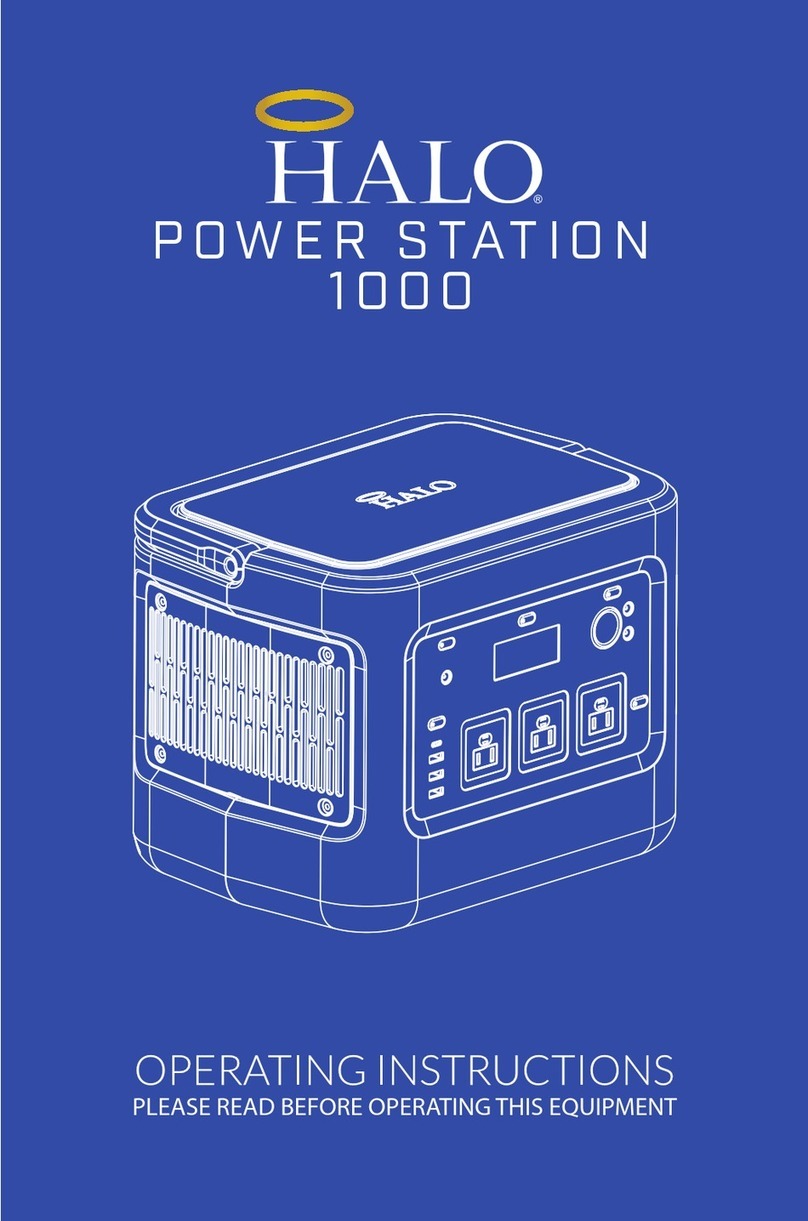
Halo
Halo 1000 operating instructions

Briggs & Stratton
Briggs & Stratton 030623-00 Operator's manual
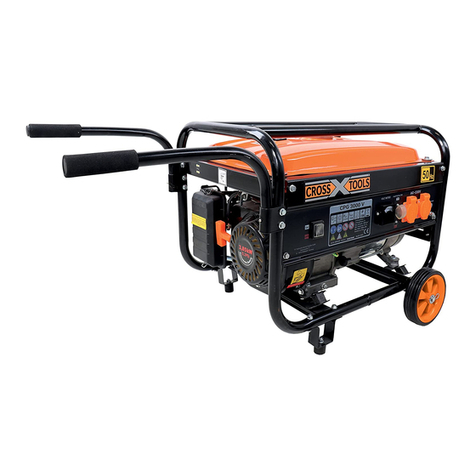
Cross Tools
Cross Tools CPG 3000 V Translation of original operating instructions

Winco
Winco 30PTOC4-03 Installation and operator's manual

Tektronix
Tektronix 067-1049-00 instructions
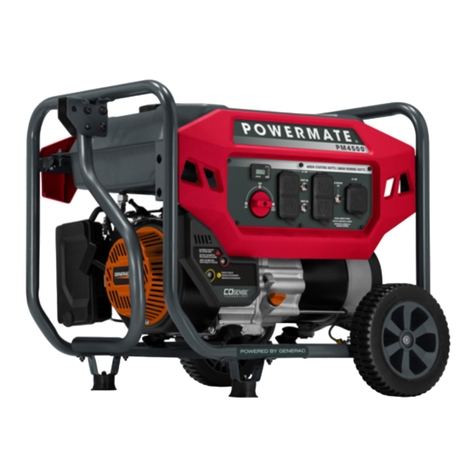
Powermate
Powermate PM3800 owner's manual

Onan
Onan Emerald Plus BGE Series Operator's manual
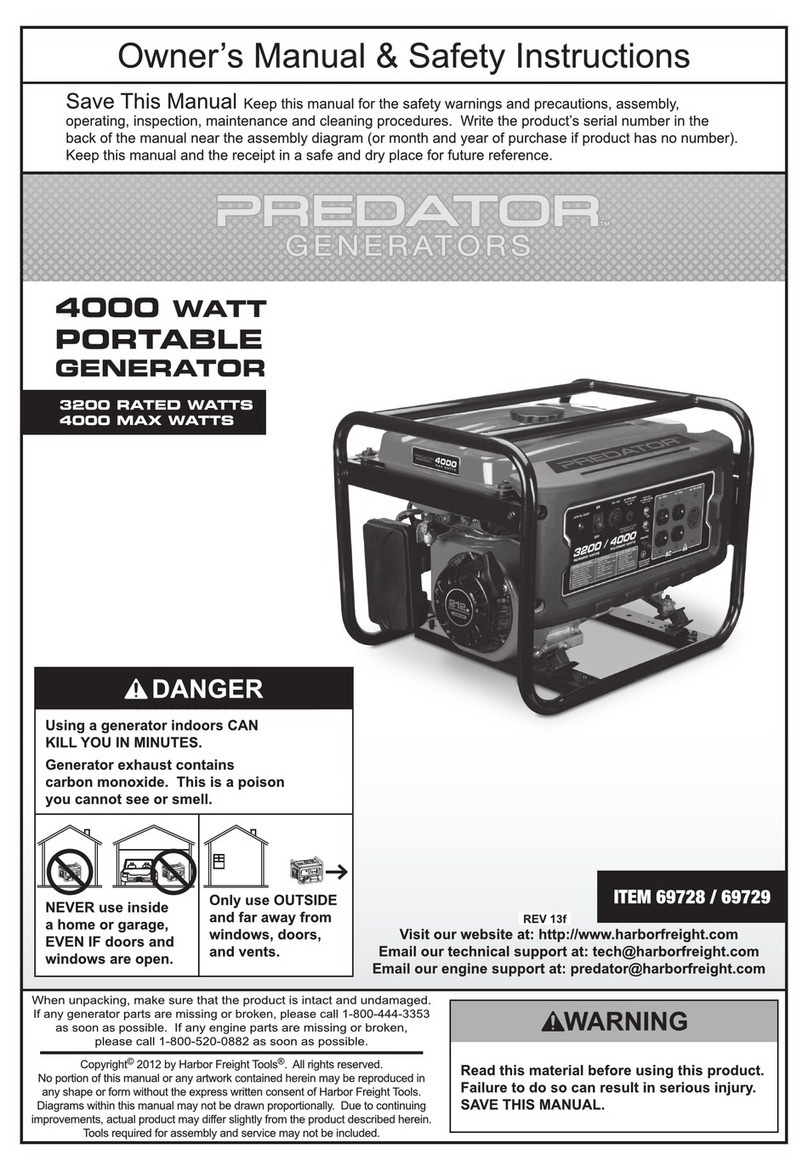
Predator
Predator Predator Generators 4000 Watt Portable... Owner's manual & safety instructions
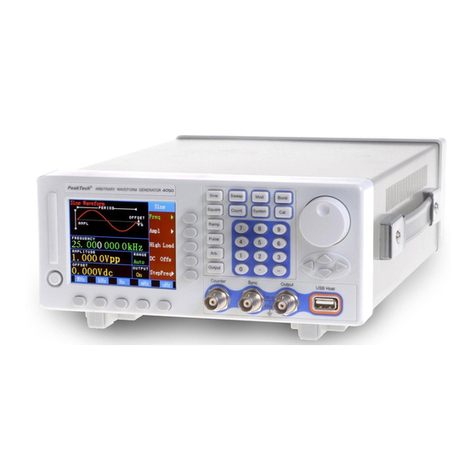
PeakTech
PeakTech 4035 Operation manual
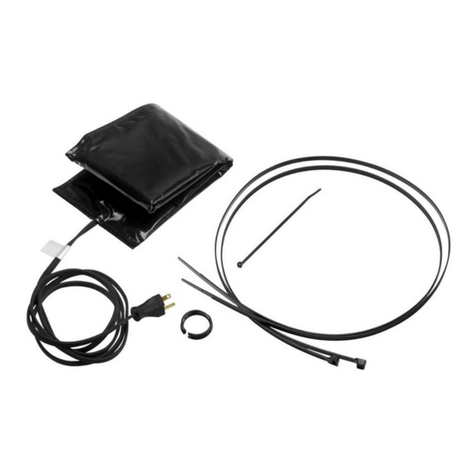
Kohler
Kohler GM93357-KP1-QS installation instructions
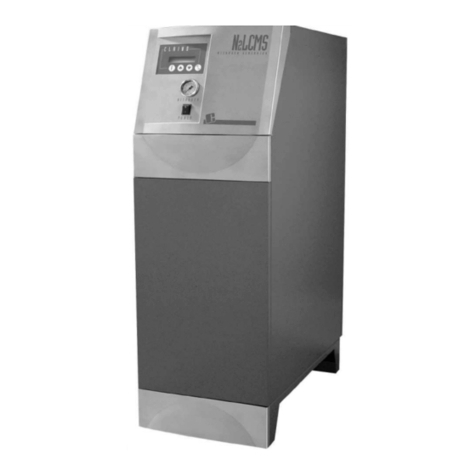
Claind
Claind N2 LCMS 1 user manual
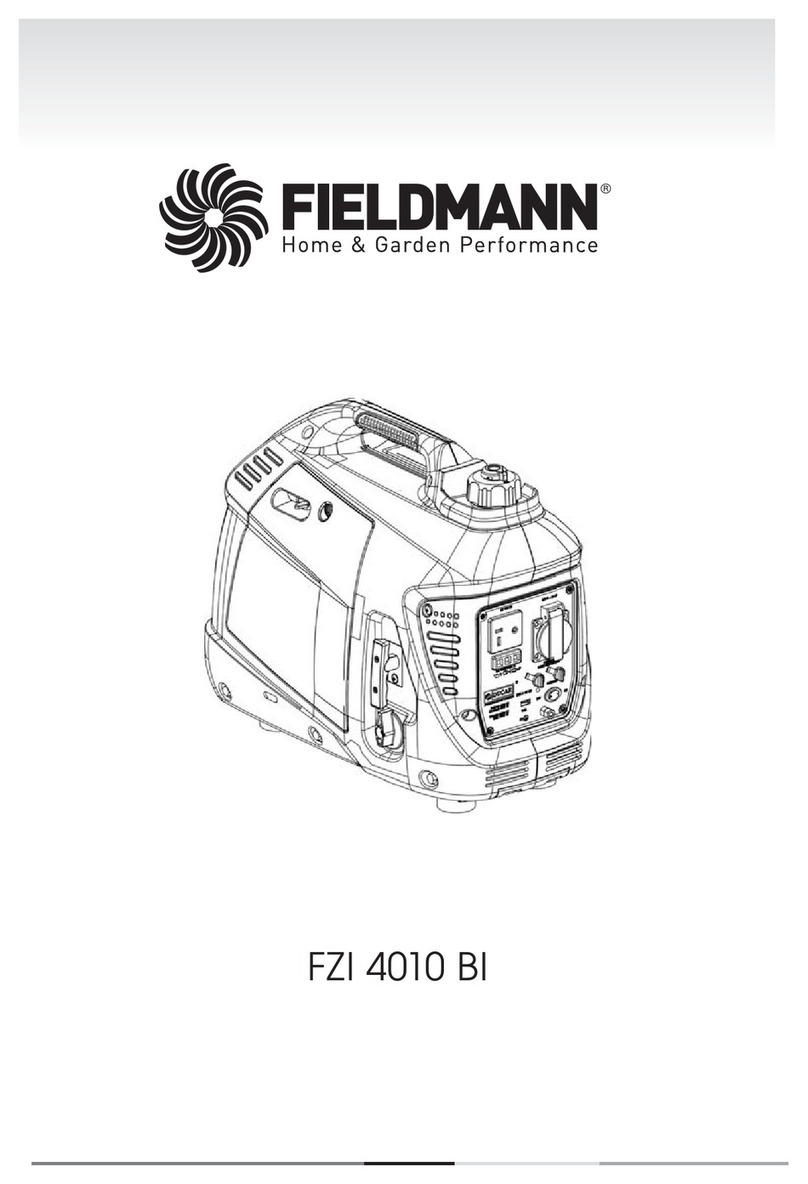
Fieldmann
Fieldmann FZI 4010 BI user manual
